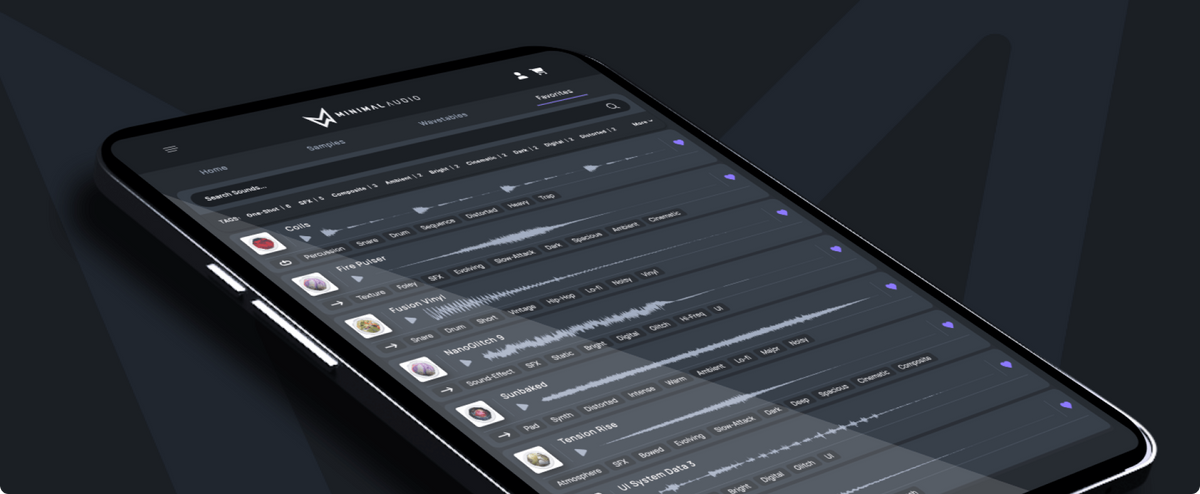Hey Everybody it’s Jake T. with Minimal Audio, and we’re coming through with another entry into our blog. This time in preparation for the hotly anticipated launch of Stream we’re going to take a look at how one can create a beat entirely from the Minimal Audio sample library!
Exclusively using samples can be deceptively tricky when it comes to making a track from start to finish. Together we’ll examine a beat that I’ve created and how I went about avoiding some of those pitfalls. Whether it’s a question of key or the timing of a sample there are a lot of variables in play that can trip up even the most seasoned producers. That’s why exercises like this are so important, they keep your instincts sharp and reinforce your attention to detail. Some of the greatest songs ever written have come strictly from sample manipulation, so even if you feel like you’ve seen it all; sometimes taking a second and going back to the basics can yield exciting results!
But First, Lets Talk About Stream

Stream is the new sample library from Minimal Audio. It is our tool for downloading and organizing thousands of high-quality samples created by our illustrious team of sound designers. Every single one of these samples has been poured over and tweaked to perfection, making each sound an amazing jumping-off point for your artistic expression.
Every sample pack that we’ve released is currently available on Stream, as will be all of our forthcoming releases. No longer do you have to buy the whole pack if you’re only interested in a few bespoke sounds that you already have ideas for.
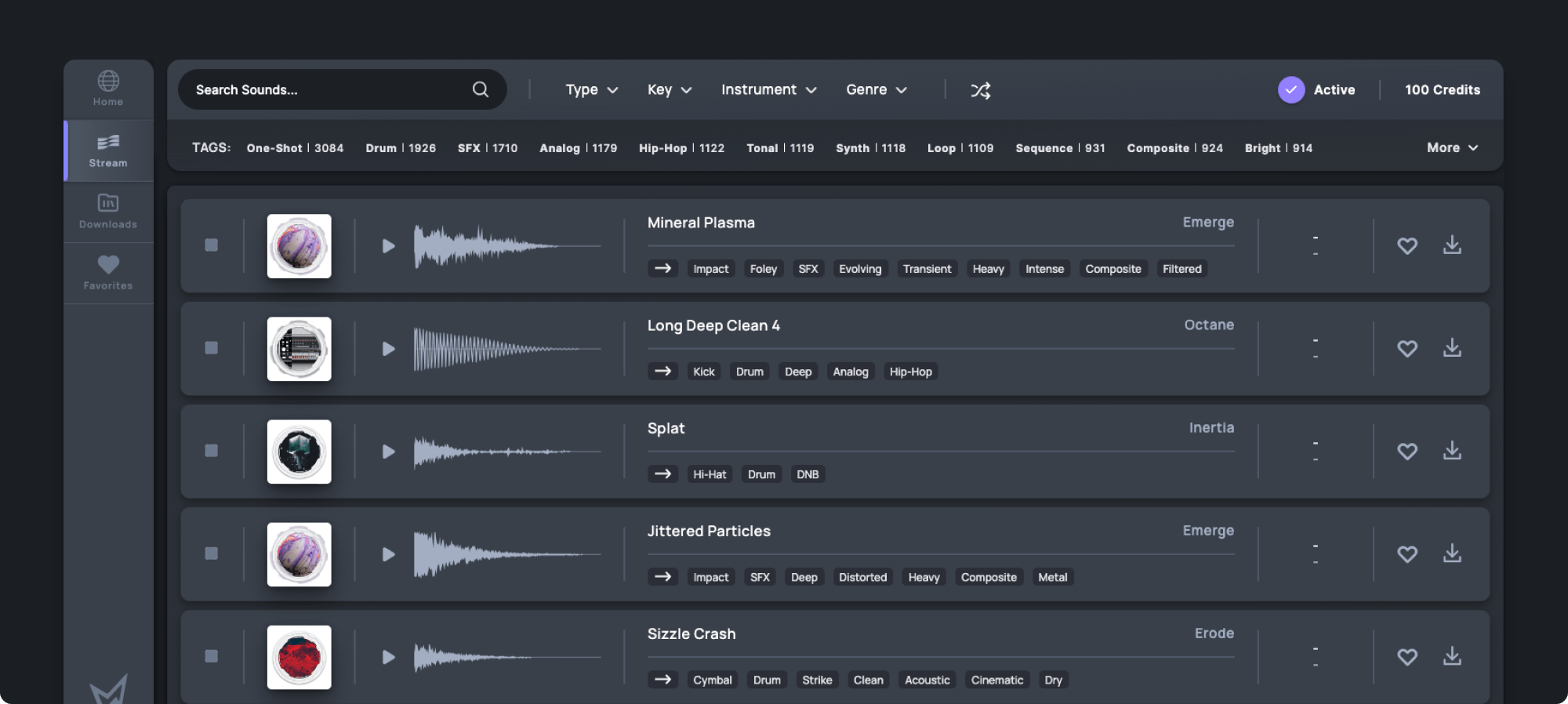
All of our samples have been meticulously tagged into four distinct categories. These are sample type (one-shots, or loops), category, genre, and key. These tags make searching for samples intuitive and efficient as one can quickly sort through the vast array of sounds Stream has to offer. This is so that you can dive right back into the flow of your session without missing a beat.
As with all of our products at Minimal Audio, Stream is a tool that supports your artistic process; not dictate it. That’s why we’ve designed the platform’s UI to be as transparent as possible. Because we want you to be spending as little time in it as possible.
Now that we’ve shined a spotlight on Stream, let’s move on to our tutorial!
Making the Beat
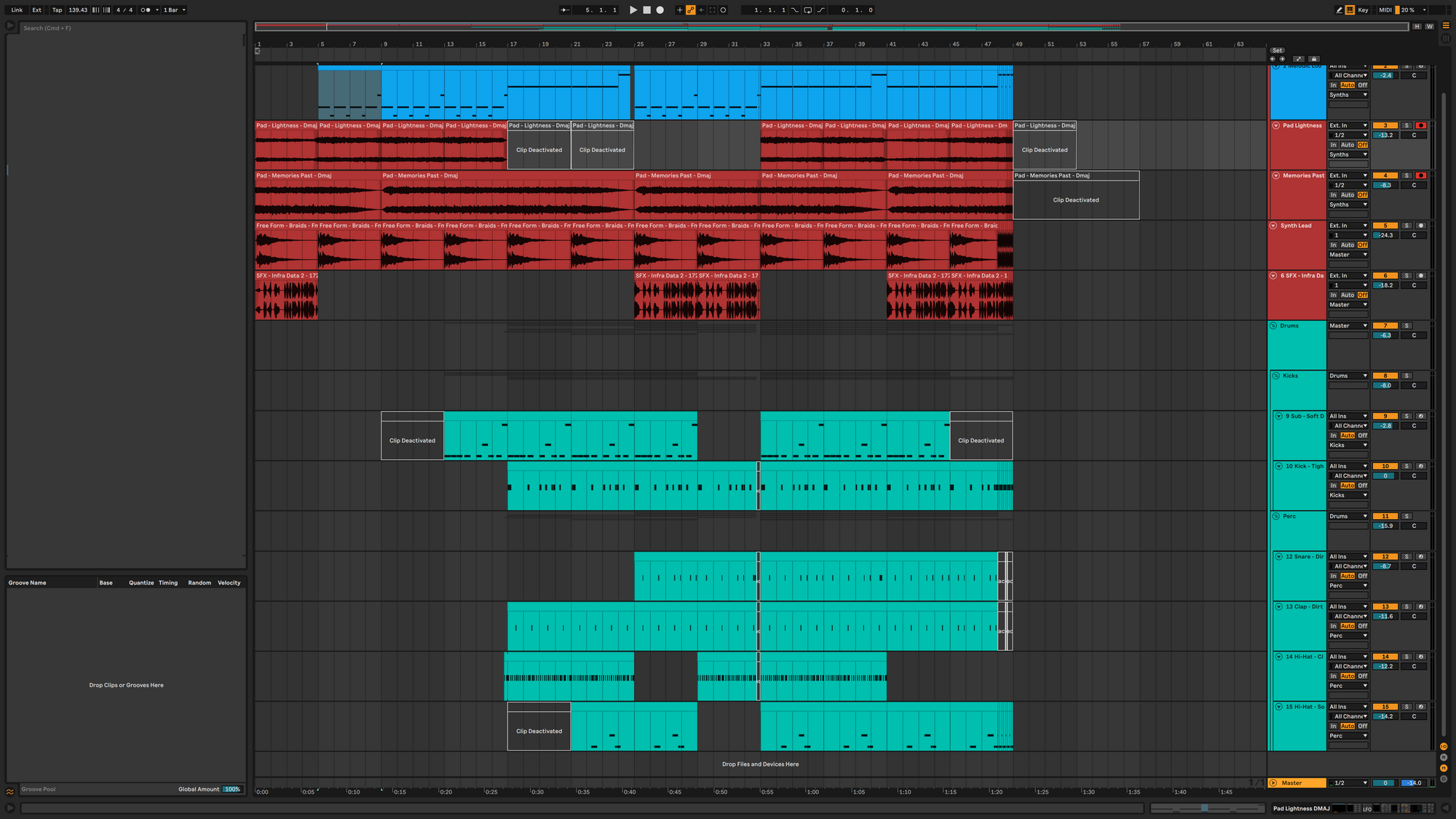
For our beat I decided to make something light and spacey, that retained a strong presence in the low end. Think somewhere in between Bladee, and Asap Rocky. In our session, I only used samples from the Minimal Audio library, paired with stock Ableton effects. On our drum bus, I used one fairly transparent instance of Rift and a couple of third-party plug-ins for loudness on the master. Otherwise, all of our sounds are the same as they come from Stream. Our session is in Ableton Live 11, the BPM is 139.43, but this is rap music so we’re using halftime to retain a 2/4 feel. And finally, our key is D Major. Now let's dive in!
The Harmony
First, let’s start with our lighter atmospheric sounds. The secret to our pads is that they are not specifically complex individually, but by weaving multiple samples that fit the same general aesthetic together. We yield a web of intricately layered sound that gives propulsion to the song, without becoming the main focal point of it. If you’re making a beat that is intended for vocals, it’s always in your best interest to follow a less is more approach toward your harmonic content. The space you install here gives your beat more approachability when it comes time for an artist to lay down their parts.
The Melodic Loop

For our main melodic loop, I kept it to a simple A section/B section formal pattern by using “simpler” (a stock sampler from Ableton Live) to outline the tonic and the dominant of our scale (D, and A), as well as the tonic and the octave (D, and the next D in our higher octave). This creates a simple and effective atmosphere that creates a nice bed for the artist, as well as the rest of the beat
The Pads
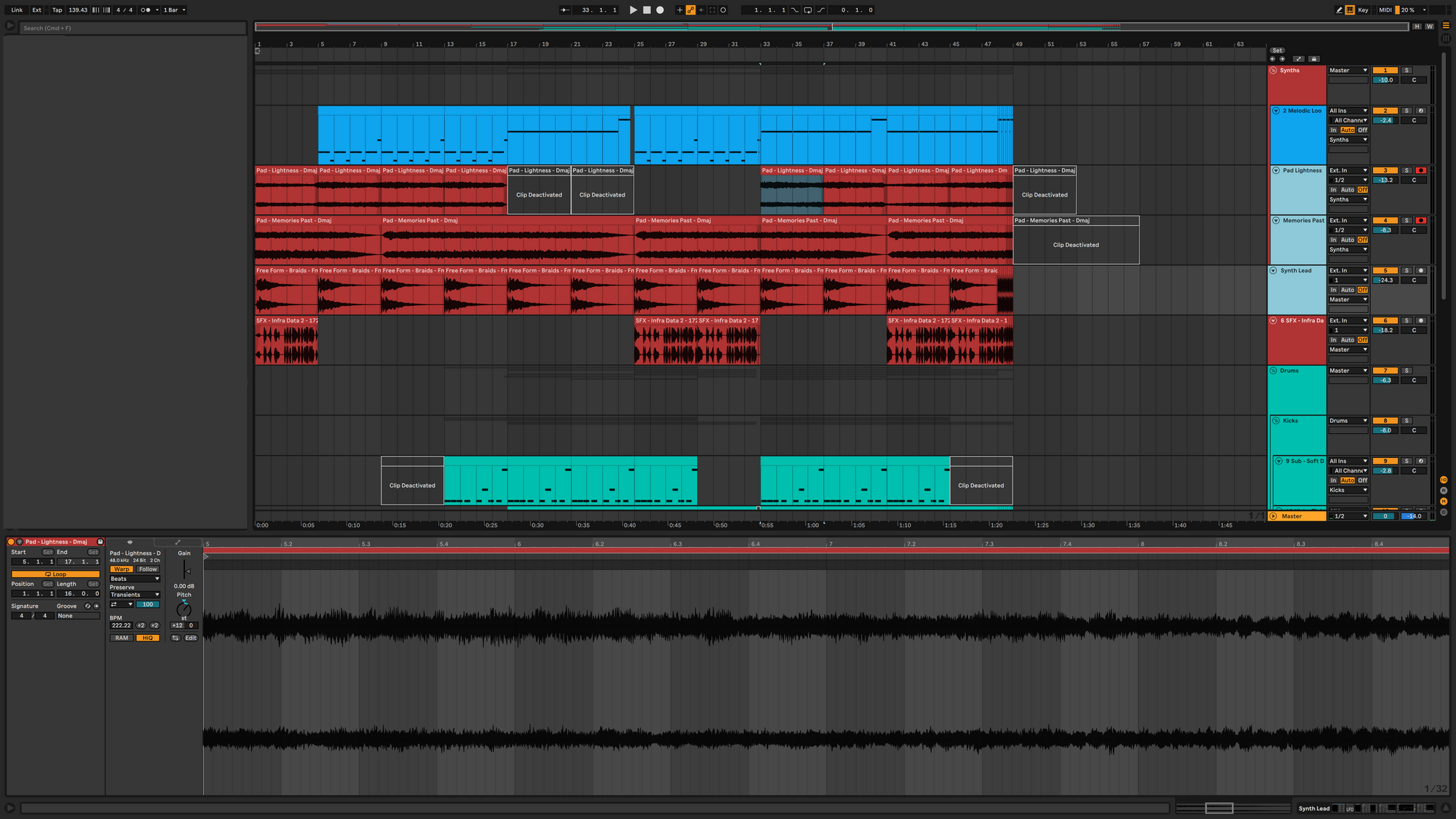
For our pads, I felt it necessary for them to take on a supportive role underneath the melodic loop. In our first sound labeled “Lightness,” I merely chopped a loop from a section of the sample that I felt paired well with our melodic loop. This is to add atmosphere to our song so that when I cut the whole harmony it makes for a more powerful moment.
Our second pad labeled "Memories Past" is gated to the clap of our drum kit. This means that whenever our clap hits; this second pad plays for a short period. This gives our drum kit a little more oomph when we want to accentuate the 2/4 feel of our drums.
Reestablishing The "1"

The next sound I’d like to talk about is our sample labeled "Freeform Braids." This track name in our session is a bit of a misnomer, as its role is more as a place for the “1” of our beat to land rather than a riff or melodic movement. However, the sample still plays a vital role in our song. This is because the sample establishes an expectation that the listener can land on while the rest of the beat can shift around it.
The Atmosphere
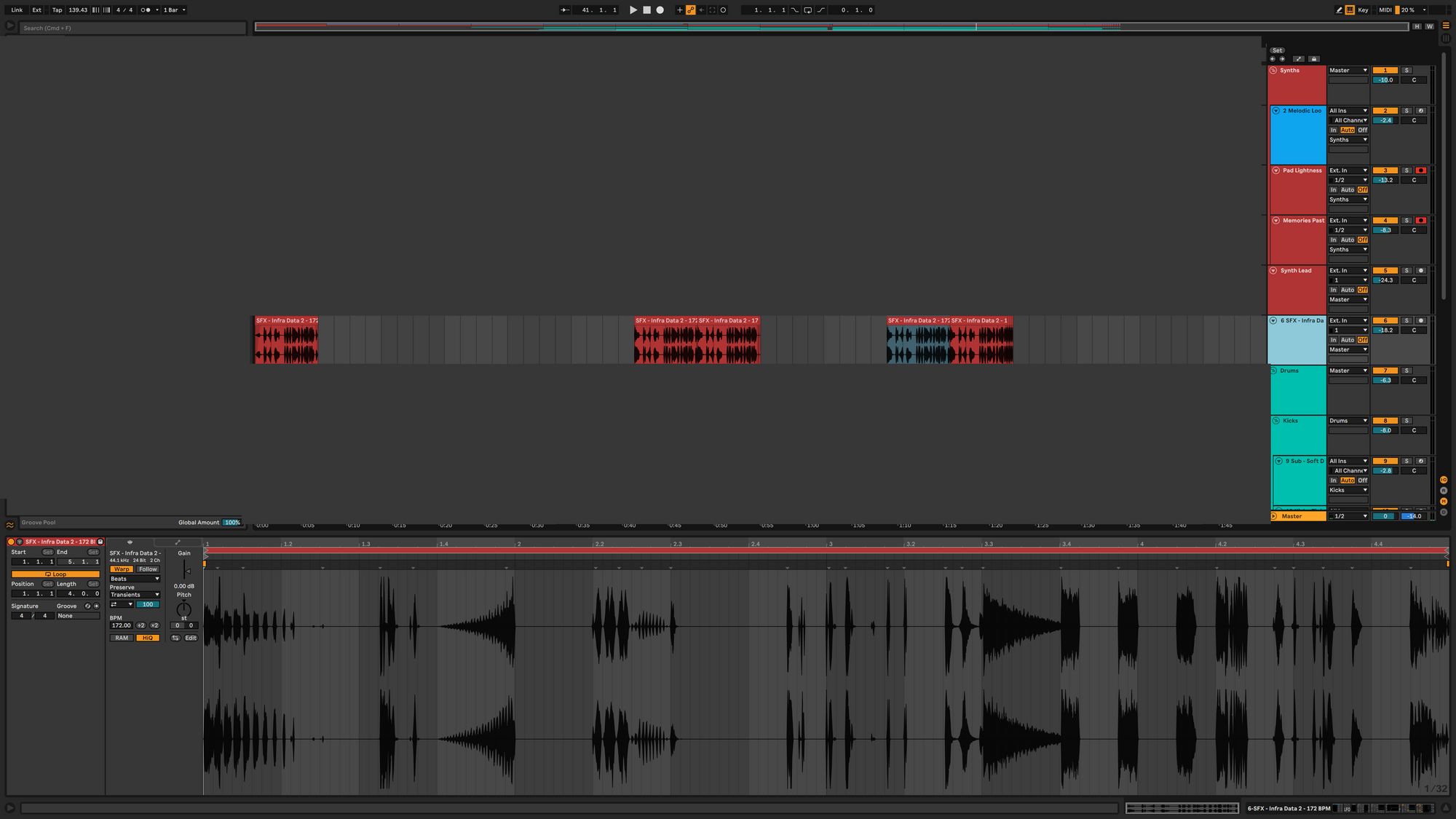
Lastly, we have our accentuating atmospheric sample. Think of this sample as a little bit of seasoning for your song. It’s added late in the songwriting session to give the beat a little more flavor. It doesn’t take on any heavy lifting, it’s merely meant to support what's already there.
The Drums
Since we now have the atmospheric section of our beat, let's get to the important parts…The drums!
The drums in any beat are easily the most important part of your composition. They establish the feel, and the tempo of your song, while maintaining a latticework of metre that the rest of your track hangs off of. In short, the drums should be the cornerstone of any kind of beat, and this is especially true for the hip-hop type of feel that we’ve made here. Now let’s itemize this part and examine each drum one by one.
The 808
Our 808 is the most important part of our drum section. A strong 808 bass can make or break a track, so your sample selection here should be uncompromising. In short, once you find it you’ll find it, and don’t settle for anything less until you do. For our 808 I used the “Sub, Soft Deepness” sample from Minimal’s Octane sample pack. This provides a nice slightly laid-back tone, that will pair well with a more distorted higher kick sample. The pattern looks like this:

Notice that I’m just outlining the strong and off beats that work well with the whole of the song, I’m not getting fancy with percussive rolls yet that comes later.
The Kick

For the kick, I chose a sample that would specifically gel well with the 808 we’ve already established. The kick in this context is only supposed to functionally support the 808. It gives the whole of our kick pattern (the 808 and the high kick blended) enough spice to serve as the rhythmic backbone of our track, while still retaining some spice for the pattern.
The Clap, and The Snare

If the kick in a hip-hop beat is the king of your drum kit, then the clap and the snare are your queens. Where the kick tends to create rhythmic tension in your track, the clap is meant to release it. By placing the clap on the “3” of every beat we retain our 2/4 feel (remember we’re in halftime) while creating a rhythmic landing point for our track.

Since we have the clap anchoring our beat, we can give our snare a little more finesse. Notice that I’m still following the beat of the clap and only adding small rhythmic flourishes in only a few places. I’ll say this a couple of times in this article, but when it comes to individual patterns in a complex beat: less is more. The track is more than the sum of its parts and its complexity will blossom from the culmination of many relatively simple fills and flourishes.
The Hats
Now if you’ve been waiting for complexity, the hats are a great place to get creative. Let’s take a look at the sequence for our closed hat

In this sequence, I started with a simple eighth-note pulse and small triplet rolls when I felt it was rhythmically appropriate. If you struggle with the placement of your high hat rolls, start with the quarter note before or after your clap. This will give you a sense of the rhythmic role a roll can play, and as you develop your sense for their placement you can start to get a little fancier (as seen in the sequence above)
The Cymbal

Finally, we’ll take a look at our cymbals. This is the simplest sequence in the entire song, meant only to accentuate the second half of the kick pattern. When writing this I copied over my 808 pattern and deleted some of the notes until I felt the pattern was compelling. If you struggle with finding the right sequence for your cymbals you can also employ this technique to great effect!
Making a beat purely from samples is a rewarding exercise for producers at any point in their journey. For younger producers, making this kind of beat can teach them how sounds interact with each other in interesting and unexpected ways. And for more seasoned producers, it lets them get back to the basics, and find some fun in their fundamentals. What excites me about these kinds of exercises is the experimentation it allows for me. I never would’ve thought to pair these kinds of atmospheric sounds together, but as I browsed Stream inspiration struck me, and I made something that surprised me so much it put a smile on my face. And what more as an artist can I ask for than that?
If you too want to be surprised and elated by the countless samples and sounds Stream has to offer. Take advantage of our free trial and experience for yourself, the musicality and expressiveness of a whole auditory universe right at your fingertips.


